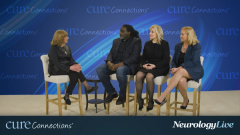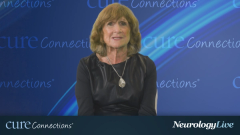
Shared Decision-Making in Multiple Sclerosis
The panel discusses the role of shared decision-making to improve treatment outcomes for patients living with multiple sclerosis.
Episodes in this series

June Halper, MSN, APN-C, MSCN, FAAN: There’s so much information about natural substances, not putting medicines into your body, and patients going on alternative therapies. How do you persuade a patient to go on disease-modifying therapies? Dr Picone, I’m sure you’ve seen that. I’ve heard that. It’s wonderful to have yoga, meditation, mindfulness, and all the natural substances, but the shared decision-making has to be about going on 1 of these wonderful medicines. A number of patients out there are very reluctant.
Craig Mainor: When I first got diagnosed, everyone—from my mother to the bus driver—had an opinion about which road I should take. At the time of my diagnosis, I wasn’t in a place to understand where to go. I’m not an expert, so I sought a professional opinion. If Dr Picone had said, “You’ve got to eat more beetroot,” then I would’ve eaten more beetroot.
Mary Ann Picone, MD: That’s a very good point. It has to be a partnership. We both have to be in tune with what your goals are. What are you looking to achieve from life, from the disease, from the medication? The therapies are there, but if you don’t take them, they’re not going to work. Sometimes patients have difficulty tolerating a particular medication, or it doesn’t fit with their lifestyle, or— especially with young women—we have to think about pregnancy issues, timing, and family planning. Based on the severity of someone’s disease—their age, their lifestyle, other medical problems that they might have—we try to find the best treatment for that stage of the disease and their life. It might have to change at time depending on what’s going on. If something isn’t working, we might have to make a change. But it has to be a partnership. The patients understand the importance of being on a disease-modifying therapy but also taking care of yourself. Try to stay healthy, eat the right foods—not necessarily beetroot; it could be tastier things. We try to stress low-fat diets, lots of vegetables, and a Mediterranean-style diet. Getting enough rest and exercise, not smoking, and general preventive health measures because all that impacts disease activity.
June Halper, MSN, APN-C, MSCN, FAAN: How do you handle it if patient sees an ad on TV for a drug and they come in saying, “That’s the 1 I want to go on.” Is there a resource that you utilize? For example, what MSAA [Multiple Sclerosis Association of America] has been putting together. You can’t spend all day trying to convince them that the TV was wrong.
Mary Ann Picone, MD: The ads sometimes on TV have been helpful in increasing awareness of the disease, but they are a double-edged sword because sometimes patients who may not be appropriate for those therapies come in. We might have to explain why it’s not the best 1 for you.
June Halper, MSN, APN-C, MSCN, FAAN: You don’t have all day to spend with the patients.
Mary Ann Picone, MD: Definitely. The educational resources that MSAA provides are very helpful.
June Halper, MSN, APN-C, MSCN, FAAN: Tell us about that, Gina.
Gina Murdoch: For all these reasons, we created the Ultimate MS Treatment Guide and launched it in August 2022. We were hearing from the MS community that they needed a single location for information about all FDA-approved disease-modifying therapies. They’d been trying to piece it together from a variety of areas. There’s limited time with health care providers, so they needed an opportunity to vet and look at all the options. That’s why we launched this tool. It has little individual tiles on each medication. You can sort it by when the medication was approved, whether it’s an oral or an infusion or an injection, or however you want. When you get to that particular page, there’s factual information that’s connected to the label. It’s very specific, concise, credible information about adverse effects and how it’s administered. There’s also a short video with a health care provider talking about their opinion about when this particular medication would be most advantageous.
June Halper, MSN, APN-C, MSCN, FAAN: And the name of your website is?
Gina Murdoch: It’s the Ultimate MS Treatment Guide. It’s on the MSAA website. We also have videos from patients talking about how they went through their journey. It’s about not any particular medication but how they qualified the conversation with their health care provider and what they wanted to do. When you talked about lifestyle, are they talking about a family planning and that decision process? You hear from the patient. It’s been incredibly powerful to give patients an idea of the breadth of what’s available in the MS space. Wonderfully, we have many medications approved for MS. They can look through, and it’s a great conversation starter with their health care provider to have that shared decision-making partnership.
The other aspect that’s helpful, which you talked about, is for the patient in Nebraska who may have a community neurologist who isn’t an MS specialist and may only have a small portion of their patients with MS. This gives them an opportunity to see all the options for treating MS. They can also see a health care provider talk about what they think is the right population for this particular medication. In shared decision-making, educating the health care provider and the patient can be that conversation starter.
Transcript edited for clarity
Newsletter
Keep your finger on the pulse of neurology—subscribe to NeurologyLive for expert interviews, new data, and breakthrough treatment updates.























